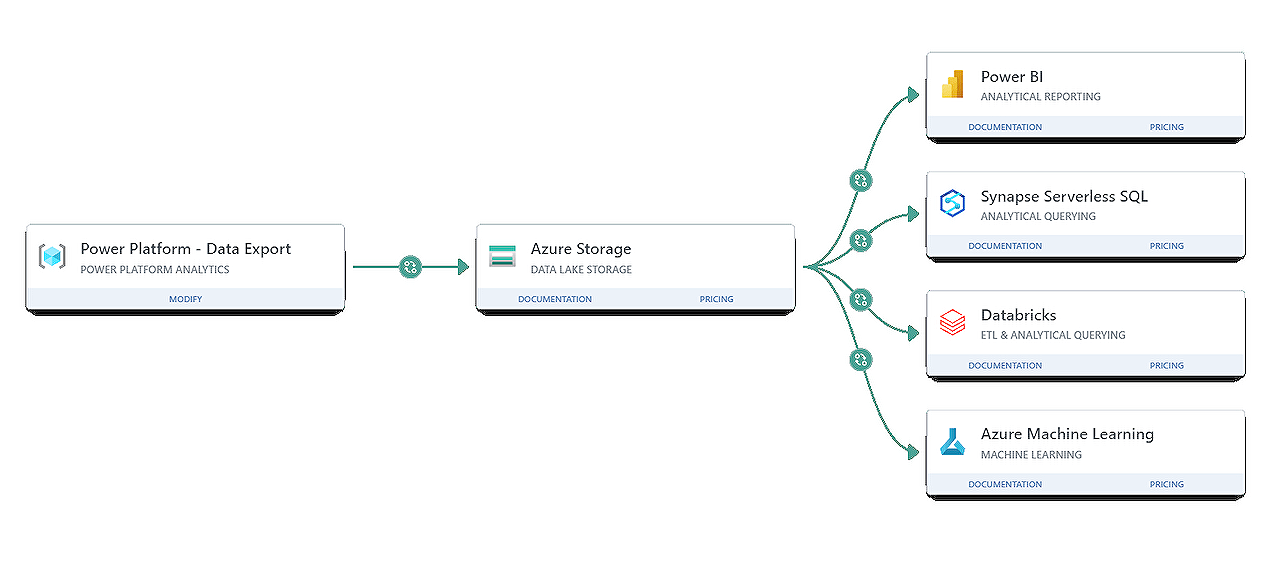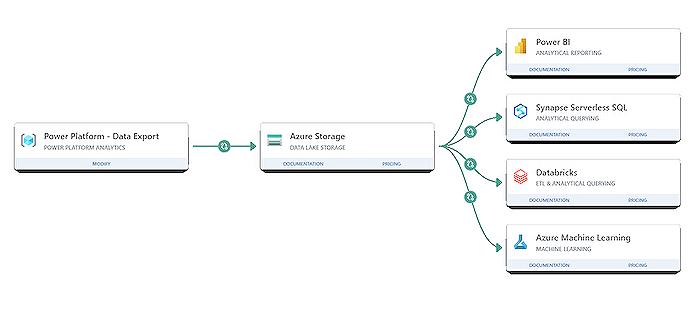
Self-Service Analytics with Microsoft Power Platform
Power Platform Consultant - creating business applications with the Power Platform, Dynamics 365 and Azure
Become a Microsoft expert with our comprehensive guide on Power Platform Self-Service Analytics using Power Apps and Power Automate Flows.
The Power Platform Self-Service Analytics empowers users to use the Data Export function from the Power Platform admin centre. This allows for the information regarding Power Apps and Power Automate Flows to be transported to an Azure Data Lake. The data is exported daily, paving the way for comprehensive analytics.
The data can be analyzed using various platforms such as Power BI, Azure Data Factory and Synapse Analytics. Utilizing Azure Subscription and Azure Data Lake will help set up Data Export. A Hierarchical Namespace-enabled Blob Storage Account is required for creating Azure Data Lake.
To continue, the Power Platform Admin Center is accessed and the Data Export option is selected. The user then decides which information to be exported (Power Automate or Power Apps) and provides necessary details regarding the storage account. It's noteworthy that filtering options are currently unavailable which means all the Power Apps and Flows inventory and data usage within a user's tenancy will be included. Typically, it takes a day to two before the export starts pushing data to your Data Lake.
Finding Your Data and Analyzing It
Once the Data Export process commences, a container known as 'powerplatform' gets created with folders labeled as 'powerapps' and 'powerautomate'. One particular folder of interest is the 'powerplatform/powerautomate/usage' folder. Here, users will find a file for each day, shedding light on all Power Automate runs executed on that specific day. The caveat here is that the most recent usage data trails two days behind, however, this might improve as the Data Export feature becomes officially available.
The Data Export service mirrors the functions of Synapse Link for Dataverse that we have discussed in earlier articles. Yet, the analytics data is presented in JSON format rather than raw data like Synapse Link. JSON or semi-structured data must be parsed before it can be used, and details on the schema can be found within the Flow usage files.
Users can utilize different ways to analyze the data in their Data Lake, one of them being the Power BI tool. They may need to select Azure Data Lake Storage Gen2 as their source to query data from this business analytics service tool. The user can then enter the URL where the data resides. Ensuring that the dfs structure has been used in the URL guarantees that no errors will be experienced.
After you authenticate your connection, you can then combine and transform the data. This will provide full access to your Power Automate flow usage data in this analytics service. The provided information is intuitive with each property or column holding distinct data. For instance, the 'resourceId' is equivalent to the 'workflow guid' and the 'status' column reveals whether the flow run was successful or unsuccessful.
While the Power Platform analytics is still in the review stage, its ability to automatically export your data to a Data Lake looks promising. Once the data is in your data Lake, a wide array of tools like Power BI, Azure Data Factory, and Synapse Analytics can be used to analyze and surface the data. There's room for adaptability when it comes to analyzing this data. For instance, users can query this data directly from the Data Lake, or leverage Azure Data Factory to move it into a database or Dataverse.
Users could also consider using the Power Platform Data Export option instead of the Microsoft Power Platform Center of Excellence for monitoring their inventory and usage. The expansive capabilities of this service give vast opportunities for overviews and detailed reporting, making it a viable consideration for those who rely on analytics.
Read the full article Power Platform Self-Service Analytics

Learn about Power Platform Self-Service Analytics
The ability to efficiently manage and analyze data is a highly sought skill in our modern digitally driven society. Self-service analytics has emerged as one of the most effective ways of dealing with vast amounts of data. You can develop your abilities in this area by familiarizing yourself with Microsoft Power Platform Admin Center's analytic tools such as the Data Export option, Power Apps, and Power Automate Flows, among others.
- Introduction to Power Platform Admin Center Data Tools
- Setting Up Data Export
- Use of Other System Tools
- Exploration of the Powerplatform
- Reading the Data
- Linking Power Platform with the Self-service BI
- Final Remarks
More links on about Power Platform Self-Service Analytics
- Microsoft Power Platform self-service analytics export ...
- Sep 13, 2023 — You can use Microsoft Power Platform self-service analytics to export Power Apps inventory and usage data directly to your Data Lake Storage ...
- Microsoft Power Platform self-service analytics schema ...
- Sep 13, 2023 — Set up Power Platform self-service analytics to export Power Apps inventory and usage data. Feedback. Submit and view feedback for. This ...
- Power Platform Self-Service Analytics
- Apr 17, 2023 — The Power Platform's Data Export feature exports the analytics data to an Azure Data Lake. Use Power BI to access your flow usage data.
Keywords
Power Platform Self-Service Analytics, Power BI assistance, Microsoft Power Platform, Self-Service Data Analysis, Power Apps Analytics, Insights from Power Platform, Power Automate Analytics, Business Intelligence Self-Service, Power Virtual Agents Analytics, Power Platform Data Intelligence.